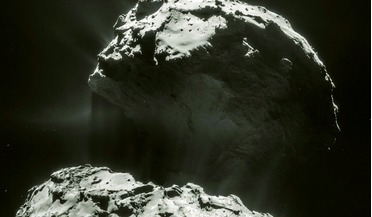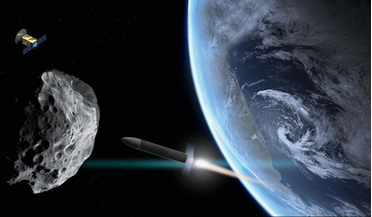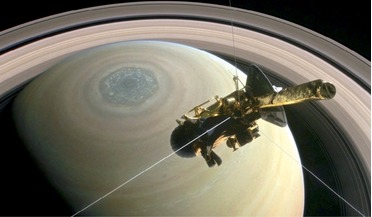 January 2020
Small body missions unveil interplanetary secrets
January 2020
Small body missions unveil interplanetary secrets
... These special positions occur because gravitational resonances with Jupiter and Mars throw these objects either inward or outward... to the gravitational influence of the planets, especially Jupiter. NEOs have become a concern because we now speculate...
 June 2020
Saving Earth – time for a new cooperative framework
June 2020
Saving Earth – time for a new cooperative framework
... military defence agencies, to make planetary defence a priority. The impacts left by fragments of comet Shoemaker–Levy 9 hitting Jupiter in 1994 are a reminder of the danger faced by Earth (JPL/NASA/STScI) Developing space technologies Despite our...
 November 2025
Extra-terrestrial Skyring: managing space debris with an artificial planetary ring
November 2025
Extra-terrestrial Skyring: managing space debris with an artificial planetary ring
... 1024 kg, so if we based our estimate using the faint ring of Jupiter, we would need at least 15-30 times more mass than is currently ... mass at a rate of 150-300 tons/year, so a Jupiter-scaled ring would be possible in 1000-2100 years and a Saturn...
 February 2016
Defending Earth against cosmic hazards
February 2016
Defending Earth against cosmic hazards
... force came in 1994 after astronomers witnessed the impact on Jupiter of a multi-part comet as it crashed into the ...between 16 and 22 July 1994 pieces of the comet bombarded Jupiter with explosive force that could easily be seen through telescopes. ...
 March 2016
Searching for water in the Solar System
March 2016
Searching for water in the Solar System
... of this question is the abundance of volatile-rich planetesimals migrated from the outer Solar System (ie, beyond Jupiter). Observations of increasing abundance of C-type asteroids across the main belt inferred from telescopic observations have led...
 October 2017
Cassini observations open up Saturn’s atmosphere
October 2017
Cassini observations open up Saturn’s atmosphere
... twice every Saturnian year. This pattern seems to be a common feature of planetary atmospheres, having also been observed on Jupiter using Earth-based telescopes. The implications are far-reaching in that waves drive these oscillating patterns...